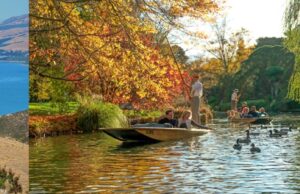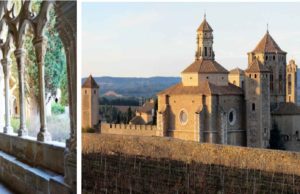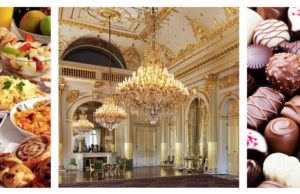
WoT's Hot
Historic. Meticulously planned. Uber stylish. Tourist-friendly. London is all that and so much more with its many wonders that never cease to amaze. If you’re a first-timer in London − and even if you’re not − by all means go to South Bank, take selfies with the Tower Bridge, pay your obeisance at the altar of Westminster Abbey, see sweeping city views from The Shard, stroll along Hyde Park, sit in a pod of the London Eye, say hello to the Queen at Buckingham Palace…in short, soak in everything that the city is known for. However, when you feel the need to get away from the overwhelming crowds and want to do more than tick the usual in the been-there-done-that list, find solace in some quieter spots. We admit that for a megapolis as universally loved as London, pretty much everything is out there and there really isn’t a ‘hidden’ gem. And yet, there are some spots that are virginal, having protected themselves from the prying eyes of tourists. These are the places only locals know of...and now you will too. Curious? Read on.
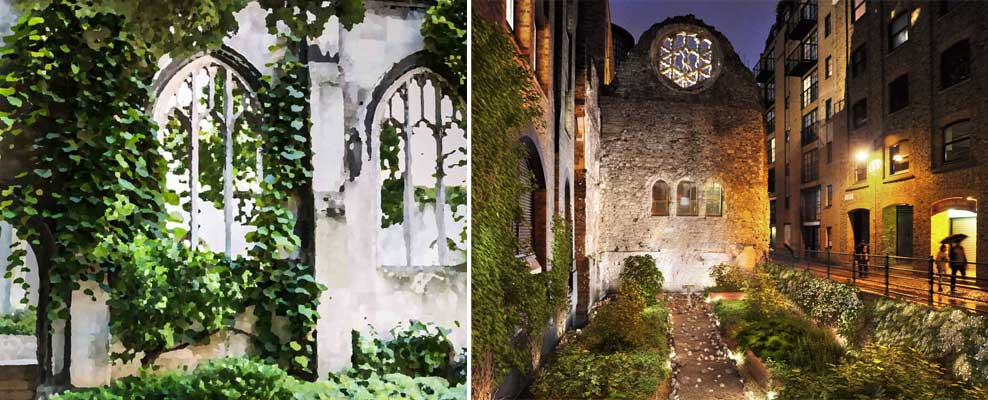
Let’s begin with something that’s right under the nose of a typical tourist and yet remains largely unnoticed: St Dunstan in the East. It used to be a church of the 12th-century vintage that continually evolved and changed with a series of renovations, patchwork jobs and disasters − including the Great Fire of London of 1666—before it became a casualty of the unfortunate Blitz of the Second World War. What remained standing in utmost determination were the Gothic steeple, a couple of walls, and bombed-out ruins that were eventually converted into a beautiful public park. St Dunstan in the East, despite its strategic location (between the wildly popular Tower of London and the iconic London Bridge), is now a quiet sanctuary tucked away in a side street. It is an oasis of green, complete with a fountain in the nave, overgrown trees, ivy embracing the walls and lots of colorful blooms. It continues to hold open-air services from time to time. On most days though, you will find office-goers of the vicinity with a book or a sandwich taking a quiet break amid the tranquility. Open from 8 am to 7 pm all year-through.
From a church, on to something that used to be ornate once upon a time but is also now a shadow of its former self: Winchester Palace. Built in the 12th century for the comfort of the Bishops of Winchester, it used to be counted among the largest and most important edifices of medieval London. Essentially a complex of courtyards comprising many buildings, including a prison, a brew-house and a butchery, it boasted a tennis court, bowling alley and pleasure gardens. What you see today are scant remains that once formed a part of the great hall; word goes that it was ostentatious and was used to host royal guests, including wedding feasts. Winchester Palace was later divided into tenements and warehouses before its fate fell into ruins, literally. A fire in 1814 almost wiped it out. An area redevelopment program in the 1980s led to the discovery of the ruins, the most magnificent being a rose window that adorned the west gable. Is it worth a visit? Totally.
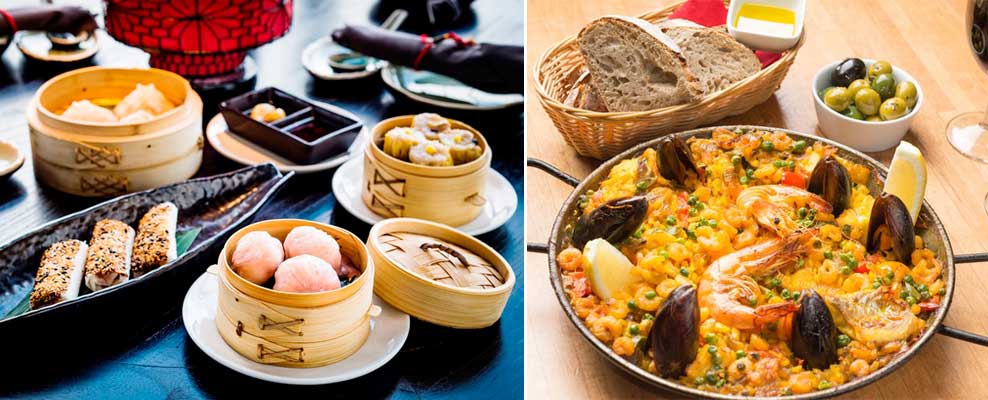
Let’s take a break from ruins and concentrate on the present that’s intact. The thriving, buzzing, trendy Piccadilly − replete with exquisite heritage buildings, fancy stores, funky office spaces and stylish cafes − serves as an aspirational area for the upwardly mobile. What most people do not know is that the premises of the hallowed 17th-century church, St. James’s, plays host to a global street food market on Mondays and Tuesdays (Be honest. Didn’t the mention of global food and London market in the same breath make you think of the obvious: the Borough Market?). Right on the doorstep of the church are stalls selling sumptuous dimsums from China, paella from the Mediterranean, sushi from Japan, beef jerky from South America, and African, Moroccan, Thai, Brazilian and even vegan grub.
It makes for a wonderful lunch destination. Oh, and did we tell you that stepping inside the church will yield another bonus? Yes, most afternoons you can catch an operatic concert in St James’s Church (even REM performed here once!). It’s free. It’s haunting. It’s addictive. Don’t tell us we didn’t tell you!

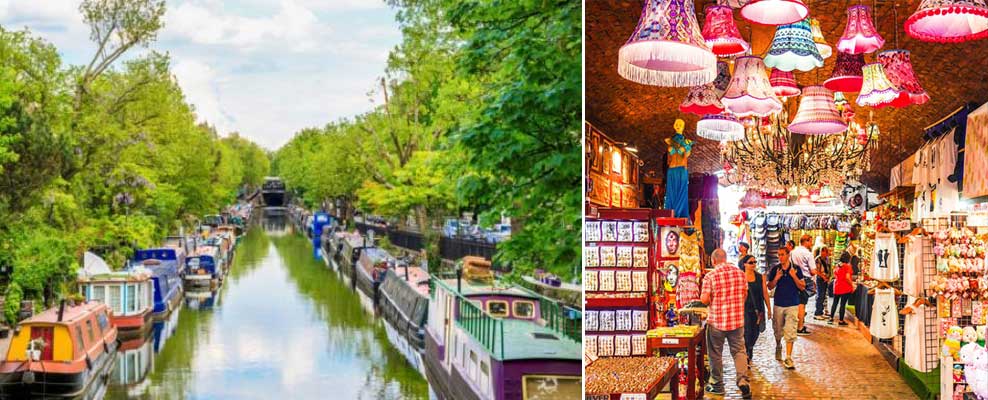
For a completely different experience, take a walk along the atmospheric Regent’s Canal and you’ll find it impossible to believe that this tranquil stretch of water runs close to the teeming Camden Market. This is where you can either walk along the canal (with quaint street art giving you and a few cyclists, walkers, rowers and birds company) or take narrow boats and kayaks to glide leisurely on the canal. You’ll pass by parks, the London Zoo, warehouses and, of course, Camden Market. Named after the Prince Regent who later became George IV, designed by John Nash and completed in 1820, Regent’s Canal starts at Little Venice and ends in Docklands. What was meant to connect the Thames with the Grand Junction Canal’s Paddington branch is now a wonderfully serene and leisurely walkway.
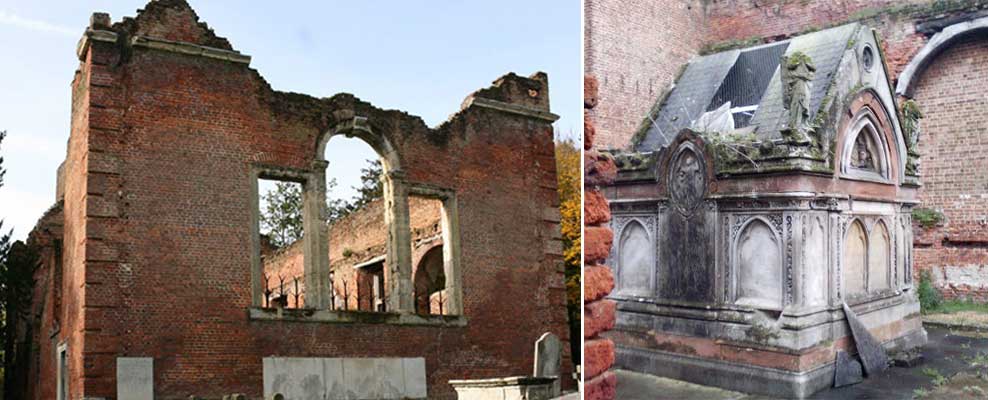
When something new comes up, the old is generally forgotten. That was the case with Stanmore’s Brick Church, built in 1632. More than 200 years later, when another church dedicated to St. John the Evangelist came up right next to it, Brick Church (it was not all brick though!) got the step-child treatment. It was decided to tear it down and sell the materials to meet the cost of making the new church. However, the demolition was halted midway when a hue and cry was raised against it. What remained were picturesque ruins that became more poignant with time, prompting them to be identified as “one of the finest ruins in the county of Middlesex” in the 1951 book ‘The Buildings England’. There is a cemetery where the nave used to be that serves as the final resting place of one of Britain’s former Prime Ministers, The Earl of Aberdeen. Another impressive memorial is the mausoleum of the Hollond family. The church still remains consecrated and even today occasional service is held. Open for viewing on Saturdays (14.30-16.30 hours) from April to September.
You may claim intimate knowledge about London’s every nook, corner and curve, but how many of the above did you know of? Be honest, now.
Photo credits: Banner Left: Tower Bridge – Trip Savvy; Banner Center: Aeroflot; Banner Right: Socialfestival.com
Historic. Meticulously planned. Uber stylish. Tourist-friendly. London is all that and so much more with its many wonders that never cease to amaze. If you’re a first-timer in London − and even if you’re not − by all means go to South Bank, take selfies with the Tower Bridge, pay your obeisance at the altar of Westminster Abbey, see swee
What to read next
Featured articles

Welcome Festive Season in Glam, Latin Quarters Launches new #PujoBling Collection with Monami Ghosh
by WOT




































